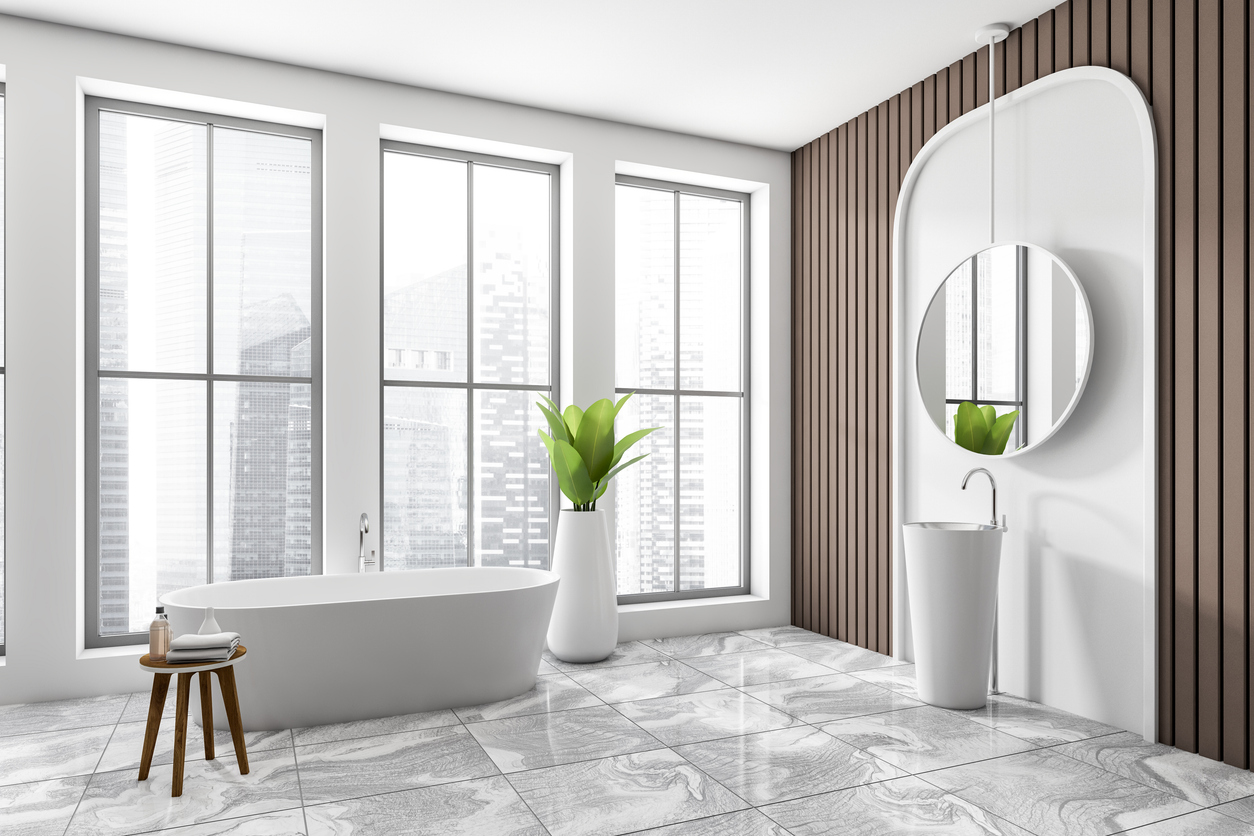
Deep Bathtubs Buying Guide 2025 -Photos & Examples
Deep bathtubs are designed for full-body immersion, offering greater depth and a more luxurious soaking experience than standard tubs. Perfect
Yes, you can paint your bathroom countertop, but before you do, there are a few things you should know before you begin.
Painting your bathroom is a straightforward process and allows you to customize your bathroom as you see fit. With so many paints and color choices, you are given artistic freedom in how you want your countertop to look. Combined with certain materials, there is a large amount of experimentation and creativity you can express compared to other countertops on the market.
However, the largest drawback is that paint is not a very durable substance. To paint your countertop you will need to routinely seal and prime your paint to ensure that your bathroom’s environment does not cause it to deteriorate.

Basically, if you want to paint your countertop, you will have a large amount of maintenance compared to other countertop choices, but your bathroom will be truly unique.
These are the most common countertop colors as they pair well with both classic and modern bathroom designs. Wood is also another popular option as it brings a natural material to your bathroom aesthetic which can make it appear more vibrant.
When painting your countertop, you want to consider these paint brands below as they have a wide selection of high-quality paints that are designed for home use:

Here are the main items you will need when painting your countertops. Please do additional research to ensure that all of the items you choose are safe anc clean.
These are the basic steps needed to paint your countertop. Once more, when conducting these steps, please ensure you are safe during the process.
If you don’t want to paint your countertop, here are a few alternatives that are highly affordable and offer you the same benefits of a painted countertop:
As its name suggests, peel and stick are a self-adhesive that you can apply to countertops. You simply choose the pattern or design you want and apply it to your countertop. The material is not very durable, and it may be expensive to get more trendy patterns, but it’s a great alternative to painting your countertop.
A more expensive option is replacing your countertop with tile. Tile is highly versatile and able to suit a wide variety of styles, colors, and designs. It is also resistant to damage, heat, and moisture and offers more durability than laminate or adhesive solutions.
Modular material consists of mini-slabs that are much smaller than traditional slabs, and the material is light enough for DIY installation. Granite is a common modular material and offers a great alternative to real granite countertops.
Laminate consists of multi-layer synthetic material that is fused together with the top layer consisting of a photo-printed material. Laminate can mimic wood, stone, and other high-quality material but is much more affordable. The downside of laminate is that it isn’t very durable and can damage easily.
When painting your countertop, avoid these common mistakes to ensure your paint looks its best.
When painting, preparation is everything. Without proper prep work, your paint area will be clean or smooth enough to allow for proper adhesion, which can result in an ugly painting job that will be to chip over time. Before starting, cover up other surfaces and areas to protect them from paint.
Research the paint you purchase and ensure that they are designed for countertops. You want paint that can hold well against heat, moisture, and high-traffic areas in your home. Countertops also show brush strokes, so you want a roller for the majority of the countertop and only resort to using a paintbrush for hard-to-reach areas.
Sealing ensures that your paint is protected from outside elements. If you forget to seal your paint, your counter will begin to chip in a month, so remember to seal it periodically to prevent damage to the paint and countertop.
Painting can be a laborious process, but every step is critical. Let your paint dry between each coat to allow for proper adhesion to the surface. If you rush the paint, the end product will look uneven and smudged. Conversely, your paint will begin to deteriorate if you don’t apply proper layering.
When you finish painting, reapply caulk along the edges to prevent water from seeping in between the openings. Reapplying caulk will also create a more uniform and seamless look for your bathroom.
A primer protects your paint and ensures a consistent coating. Although it may seem arduous and time-consuming, a primer ensures paint cohesion and protects your countertop. So don’t skip the primer.
Specifically, removing your painter’s tape after the job is done. If you do not properly clean up, your painter’s tape can leave a nasty impression that will ruin your paint.
Painting your countertop is a cost-effective way to update the look of your bathroom without breaking the bank. Just ensure that you choose the proper materials and protect your paint from the elements.

Eric is the founder and president of Badeloft USA. He has been the president of Badeloft’s US division for over ten years and oversees all marketing and branding aspects of Badeloftusa.com.
His expertise lies in small business development, sales, and home and bathroom industry trends and information.
Contact us with any business related inquiries.
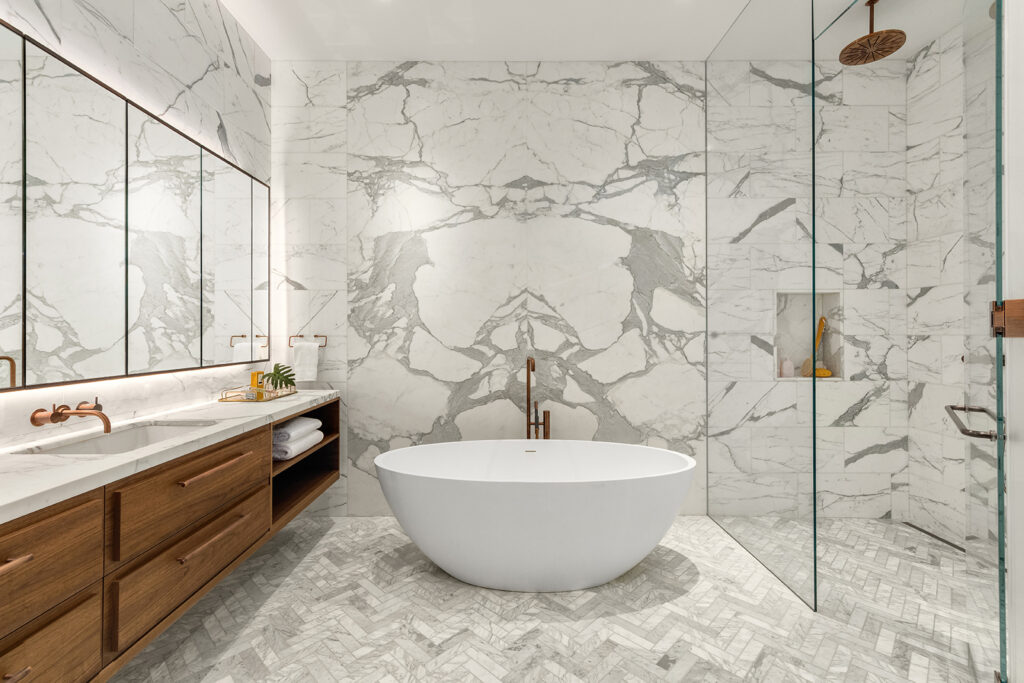
Free material samples and tub templates

Deep bathtubs are designed for full-body immersion, offering greater depth and a more luxurious soaking experience than standard tubs. Perfect
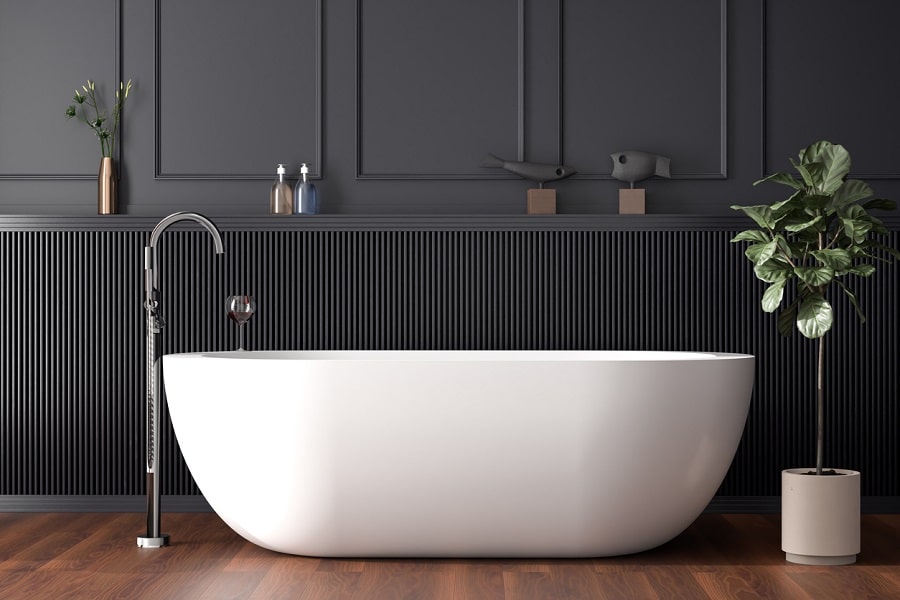
In 2025, bathtubs will be more than functional fixtures—they’ll be bold design statements that define bathroom aesthetics. From timeless white
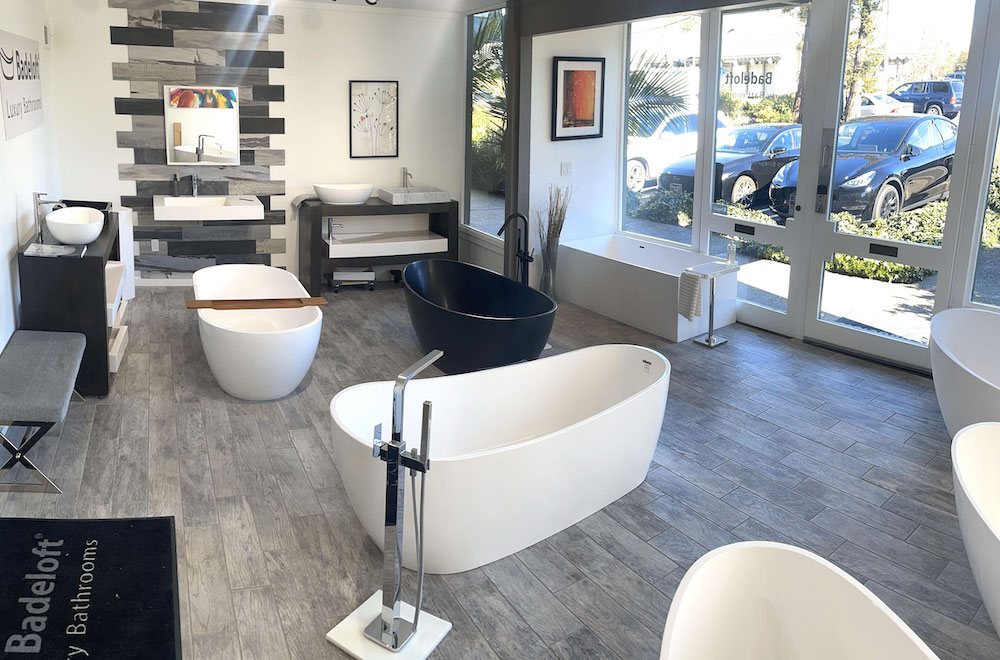
The San Francisco Bay Area is home to a variety of top-rated bathtub shops offering everything from modern, luxury designs
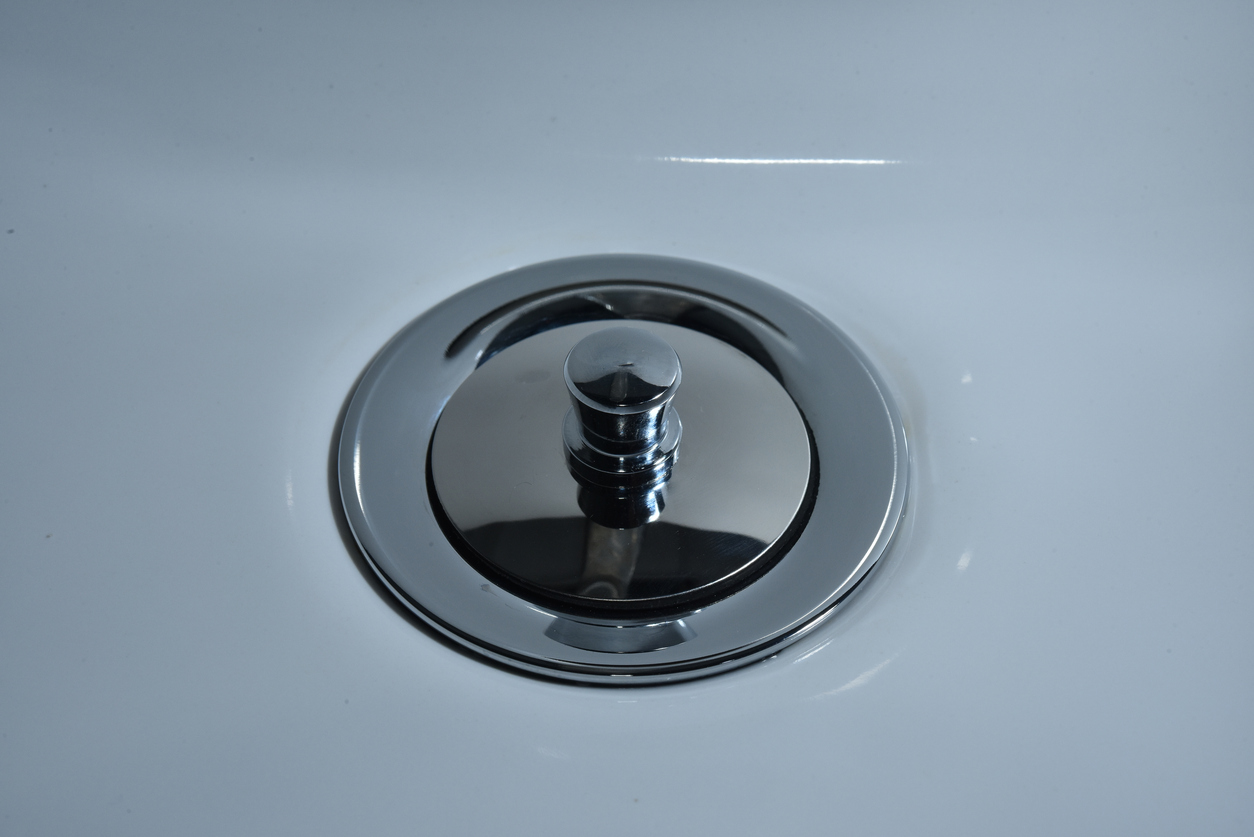
Choosing the right bathtub drain stopper is essential for creating a comfortable and functional bathing experience. With over 20 common
Fill out the form below to request a free material sample
"*" indicates required fields
"*" indicates required fields
"*" indicates required fields